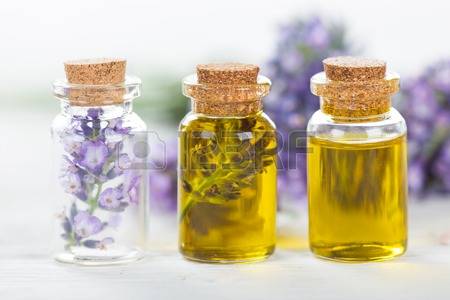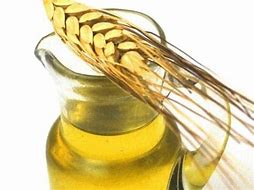







Hydrolats, Essential Oil waters, and Infused Oils
Throughout these pages I refer to "hydrolats ," essential oil "waters", and "infused Oils. They are all products which include some elements of the healing properties of the essential oils found in plants. Hydrolats can't be made at home but can be purchased from specialist suppliers. Essential oil waters are made with essential oils and they can be used, in some cases, in place of hydrolats.
Hydrolats
A great deal of water is used in the process of essential oil distillation, and it's often sold as a by-product of the manufacturing process - a hydrolat. Rose water and orange-flower water, which are used in beauty preparations and cooking, are diluted hydrolats. Herbal medicine used these and other hydrolats, such as lavender, tea tree, and camomile.
It's only the water-soluble components in plants that become imbued in the water used in the distillation process. Consequently, hydrolats should not be thought of as watered down essential oils, because they don't contain all the components that essential oils do.
Hydrolats very often smell quite different from the plant or the essential oil.
have antiseptic properties, and have their own unique uses. They can be used to spray rooms, put on bed clothing, as well as on compresses. They often have a delicious fragrance.
Hydrolats have to be bought like an essential oil. If your supplier doesn't sell them you may be able to get them through a herbalist.
Essential Oil waters
The water-infusion method creates an essential oil water, which could be used if a hydrolat is unavailable. Pour half pint of boiling water into a heat-proof bowl. Then add 6 - 10 drops of your chosen essential oil. Cover the bowl completely, so the cooled, condensed water falls back into the bowl. Then pour the mixture through an unbleached, paper coffee filter, to take out the globules of essential oil. Leave it to cool then bottle.
Infused Oils
Infused oils can be made at home and there are two ways to make them . The first way is to use a jelly jar or other container that can be kept tightly sealed, and fill it with whatever plant material you want to use, such as, lavender, chamomile, marigold, or calendula. Use the part of the plant that contains the essential oils. Pack in as much as you can, then fill the jar with a good, organic vegetable oil, such as sunflower, grapeseed, or almond oil. Put the lid on tightly, and put the jar somewhere in the sun, like a window sill. Shake the bottle every day.
After at least 48 hours, strain the oil again. To really get all the bits out, strain the oil through an unbleached paper coffee filter. It's thick, so this will take some time. To make the oil stronger, use the same oil, and add more fresh plant material, and repeat the process. Carry on until you get the aroma as strong as you want it.
The second method involves putting the flower heads or other plant material in a jar with the oil, as above and, after sealing the jar, gently heating the jar into a few inches of water in a pot, on the stove. Use Low heat - there should be no bubbling or boiling. Strain as usual.
Reference: Aromatherapy For The Healthy Child: Valerie Ann Worwood.
- How 1.5 hours of screen time a day affects a toddler’s development
- Things Mothers Should Never Say To Their Sons
- Iraq passes bill that critics say legalises child marriage
- Charles Spencer reveals he went to a 'residential treatment' centre last year after having a 'breakdown' when he revisited horrific childhood abuse in his memoir A very Private School
- Children of Dictators - 4x60’
- The elephant in the room: addressing sexual exploitation and abuse at international NGOs
- Adolescent binge drinking: Long-term effects on brain structure and function
- Racism in schools surges with SIXTY children as young as age four sent home every day
- Feeling flat and a bit ‘blah’? You may have ‘anhedonia’ – here’s how to overcome it
- The positive impact a father has by reading to their child
- What science tells us about smacking children
- Dehydration
- Dandruff
- 10 Simple Ways to Stop Your Kids Yelling At You
- These Common Phrases Said to Kids Are Actually Problematic
- Reproductive slavery: Historical and present-day discussions of the Black female body as a condition of confinement
- We accept teenagers taking the pill - why don't we feel the same about puberty blockers?
- Knowing how to talk to your kid about feelings isn’t always easy - try these 7 child-therapist-approved ways to get them talking
- Nigerian mass wedding for orphaned girls provokes outcry
- 'Here's how I got over feeling guilty for wanting time away from my kids'
- Why do lesbian and bisexual women have higher mortality rates?
- 'Are you even listening to me?' If it feels like your teenager is tuning you out, they probably are, but research proves it’s not personal, just science
- “Role modelling, without shame, is a key to success” – 5 steps to stop your kid from whining, according to a parenting coach
- How to talk to your toddler so they actually listen, according to the experts
- Urgent, gentle care: life on a neonatal unit
- Home
- Children - Insomnia
- Aches and Pains
- New Born Babies
- Babies From 2-12 months
- Spina Bifida
- Equipment Used
- Drug Abuse
- Other Ingredients
- BALANITIS - Aromachildhood
- The Handicapped Child
- Corona virus and pregnancy
- Worms
- The Methods - Aromatherapy - Children-2
- Essential Oils for General Purposes
- The Methods - Aromatherapy - Children- 3
- Hydrolats, Essential Oil Waters, and infused Oils
- Ringworm
- Basic Care Kit - Children - Essential Oils
- Acne
- Adolescent Acne
- Arthritis (juvenile Rheumatoid)
- The A - Z of Conditions
- Videos
- The Cave Man Eating Plan
- Herbal Healing Infused Oils
- Things To Make For Your First Aid Cabinet
- The Basic Care Kit For Children
- Contact Us
- Verrucas and Warts
- Caring Touch Massage
- The Methods - Aromatherapy - Children
- The Methods - Aromatherapy - Children - 4
- Athlete's Foot - 2
- Web Links
We have 20 guests and no members online





